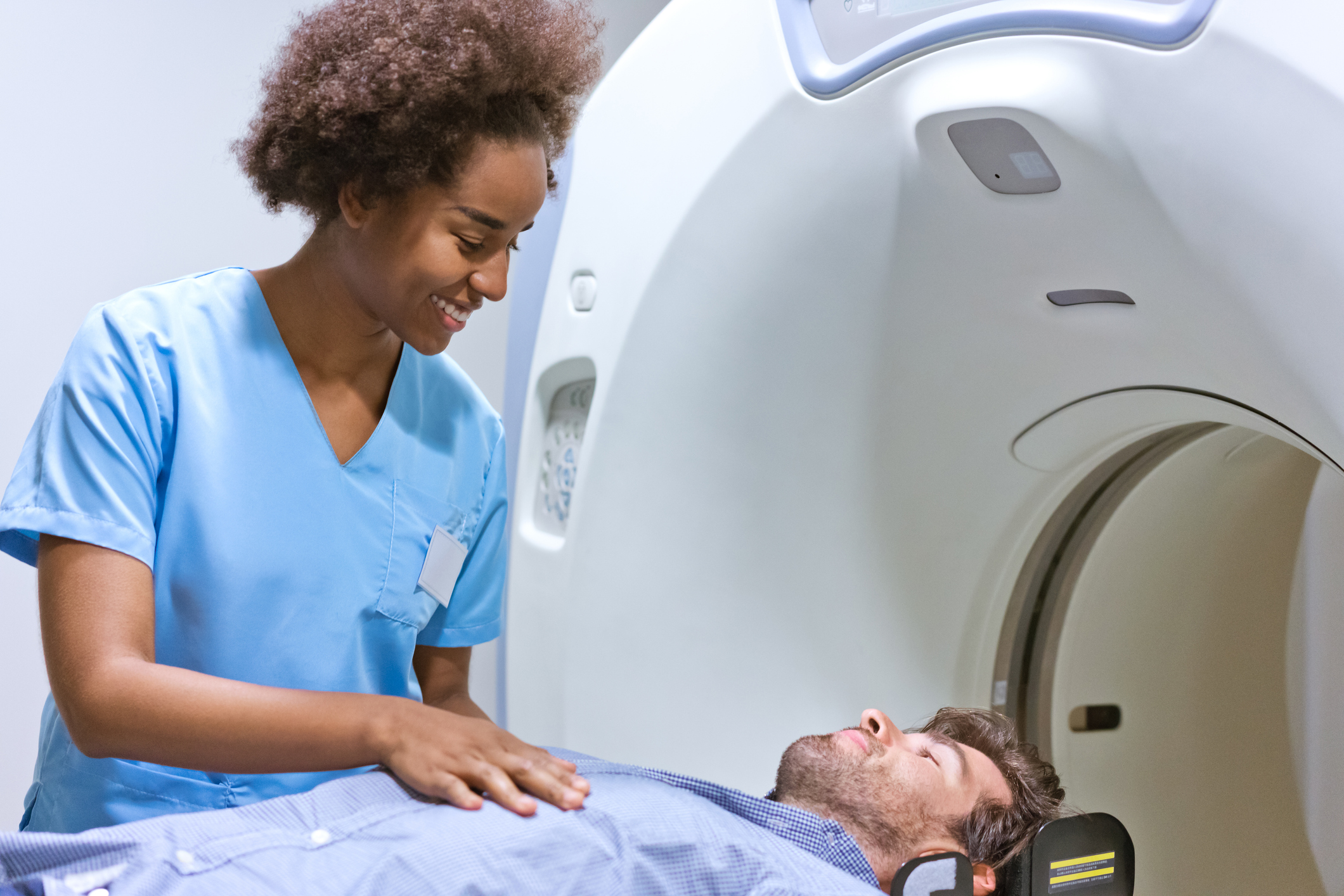MRT Roles and
Stroke Patients

Patients encounter many different types of healthcare professionals on their journeys. It can be difficult to keep track of all the people involved in your care. Medical Radiation Technologists (MRTs) are highly educated professionals involved in the care of millions of Canadians each year through medical imaging and radiation therapy.
If you have had a stroke, MRTs are a vital partner in your care who show up at multiple points along your journey, including diagnosis, investigation, treatment and follow up. We want to show you all the different times and ways MRTs care for patients who have had a stroke.
Getting a Diagnosis
A stroke is usually identified because you are having a bad headache, your face started to droop, or you lose control of one of your arms. Once you arrive at the hospital your care will quickly begin with a CT scan of your brain. An MRT specializing in CT Imaging takes images of your brain to see if there is bleeding there or if there is clot in a blood vessel preventing blood from flowing. This information will be needed quickly to determine the next steps in your treatment.
Gathering Information to Guide Your Optimal Care
If you are having a stroke, you may have an MRI scan of your brain. An MRT specializing in magnetic resonance imaging takes images showing small and subtle changes in the brain. The images your MRT takes will show changes in your brain shortly after the start of a stroke.
Getting Your Treatment
Based on the details of your diagnosis, your treatment plan may be different. Below are two different types of treatment you may receive that would involve an MRT.
- Interventional Angiogram: An MRT specializing in interventional radiology will be there taking fluoroscopic images (live and continuous x rays) to guide the specialist through your blood vessels toward the blood clot in your brain to take it out or dissolve it. They also directly assist the specialist with instruments and caring for you during your procedure.
- Anti-Clotting Injection: An injection is given that will help dissolve the blood clot. After you are given that medication, you will have a CT scan performed by an MRT specializing in CT imaging, to see if the medication has begun to correct the changes seen on your brain and to ensure there are no complications.
Recovering from your Stroke
After your treatment, it is normal for you to get follow-up scans to see how your brain is recovering and ensure there have been no complications. You may either get a CT scan or an MRI scan, both performed by an MRT. The images they provide will be critical to your recovery journey.
